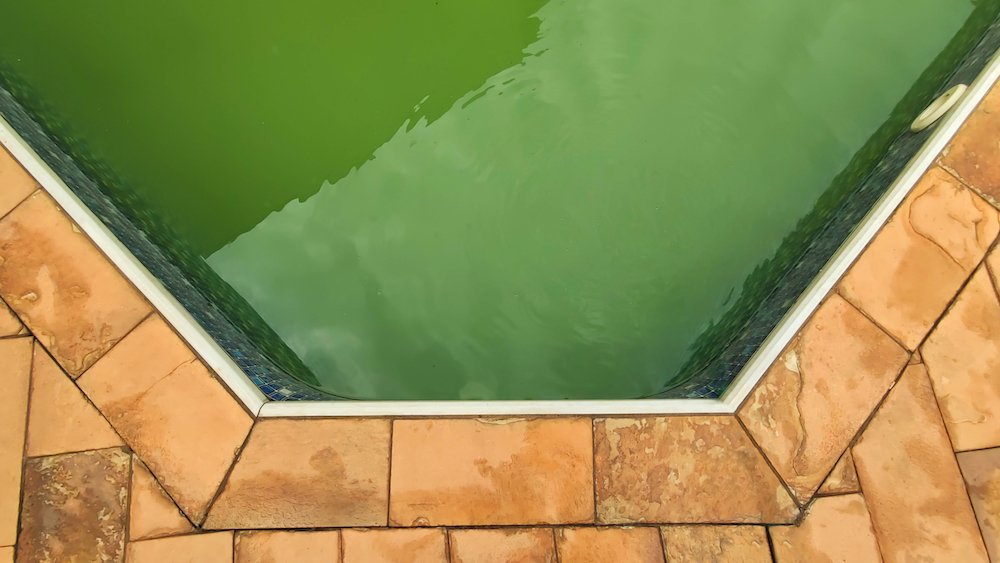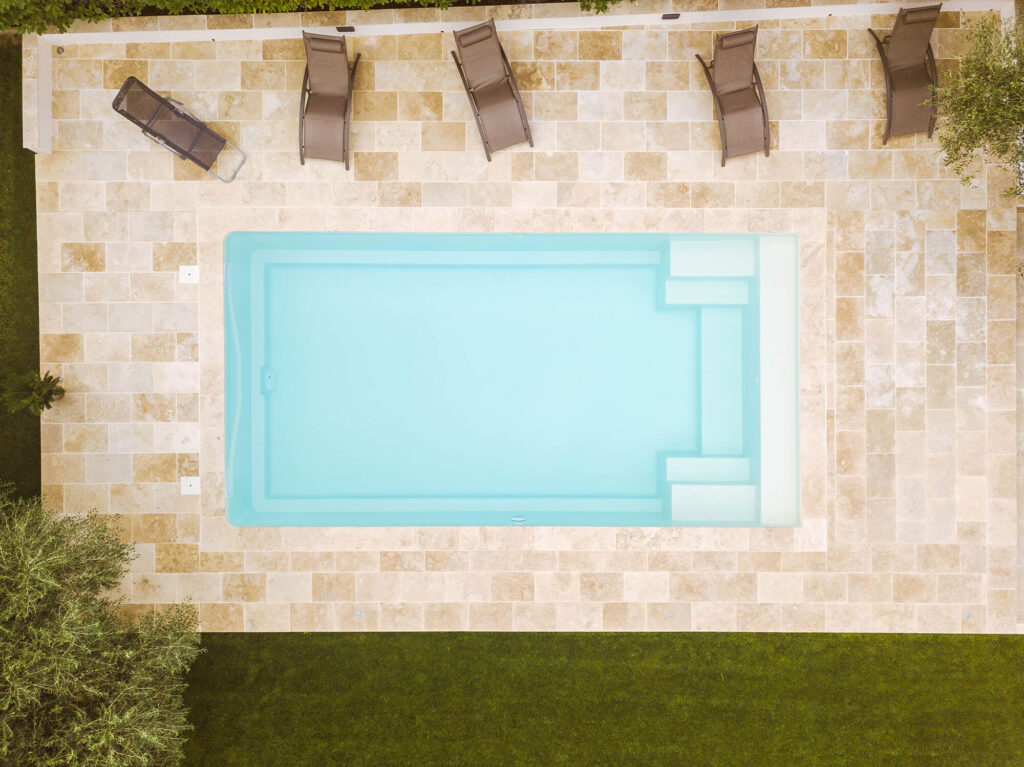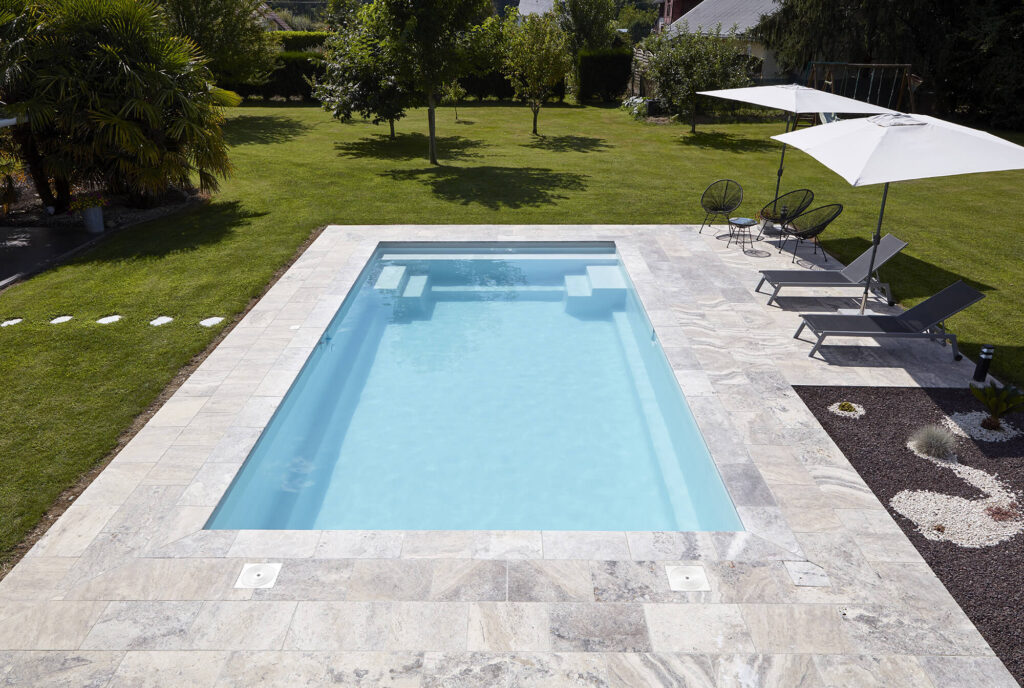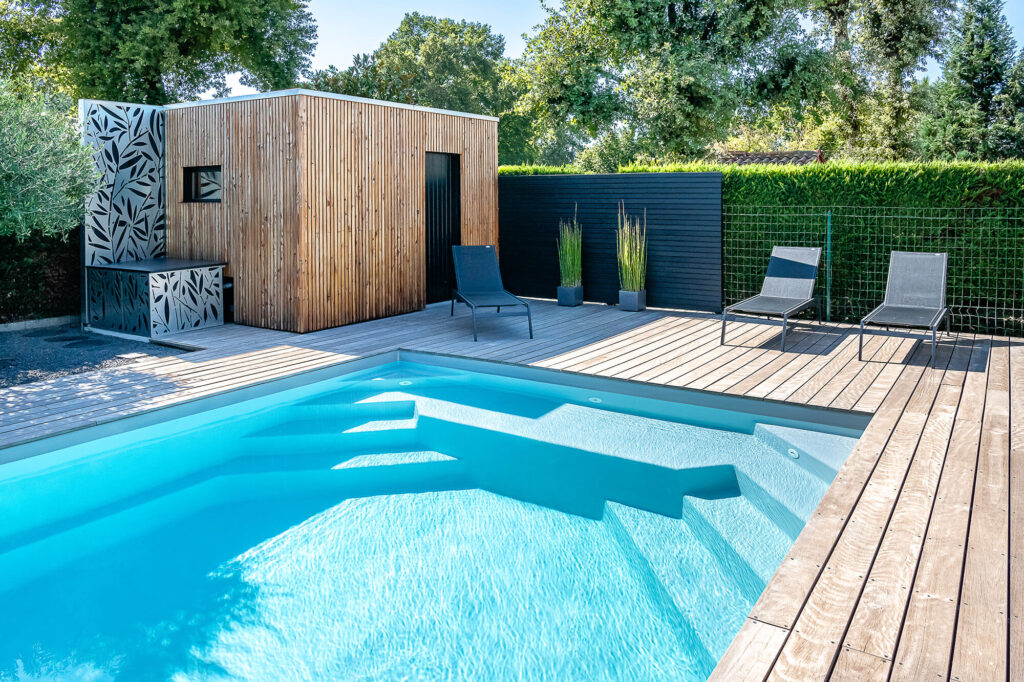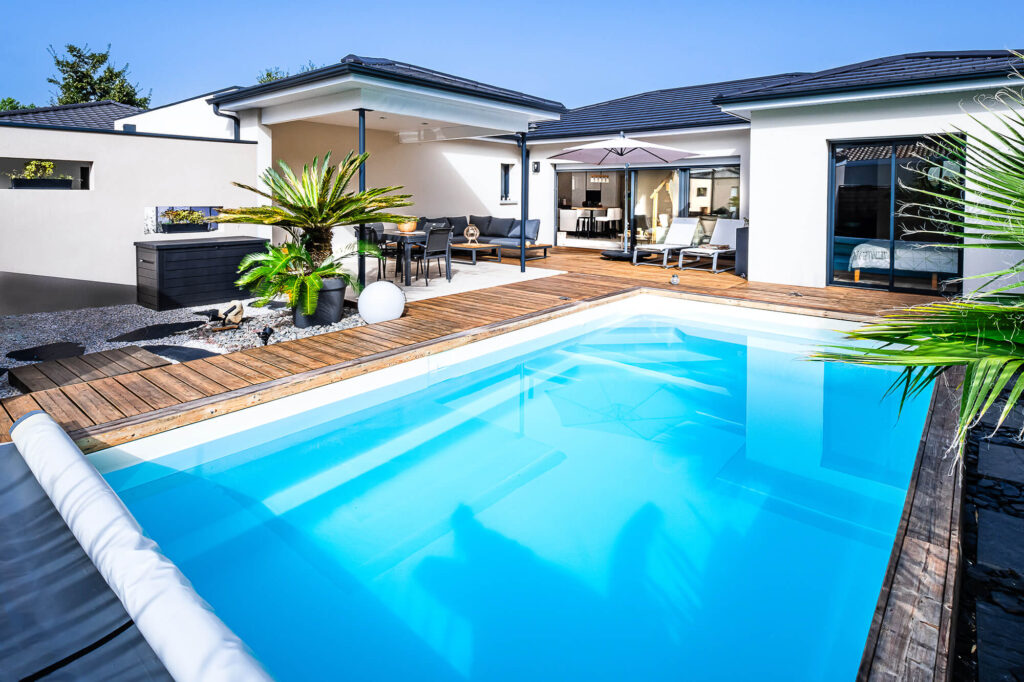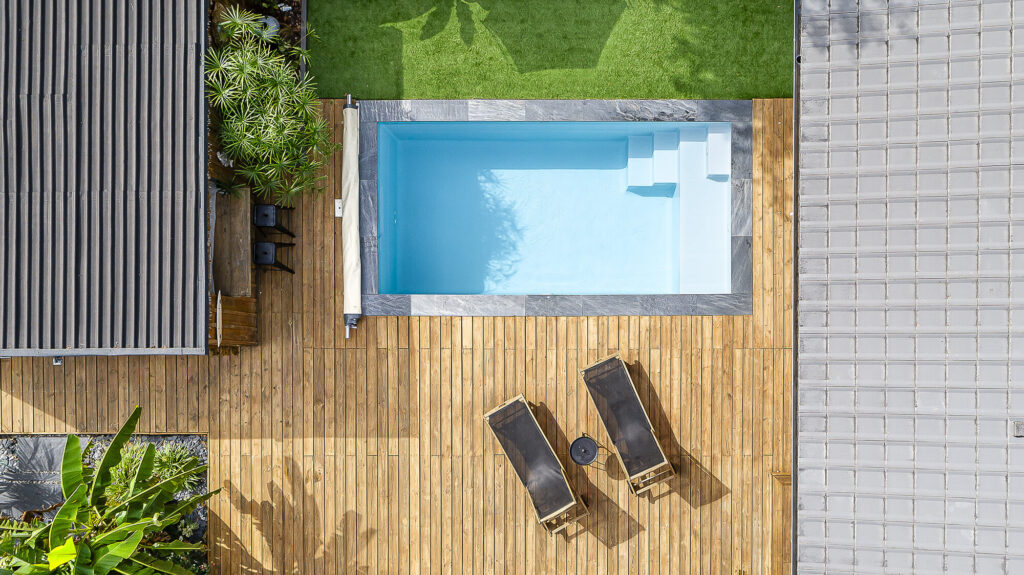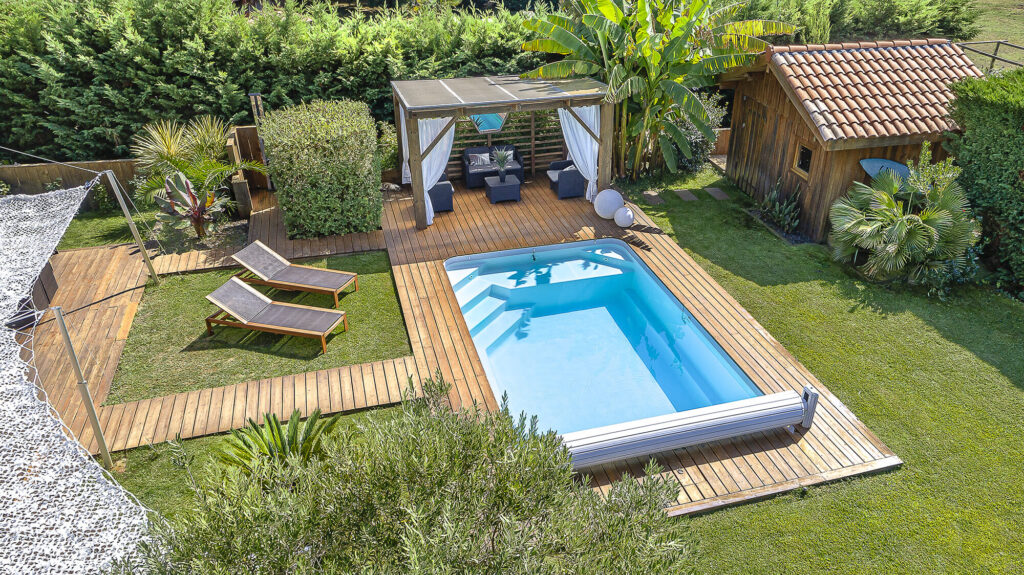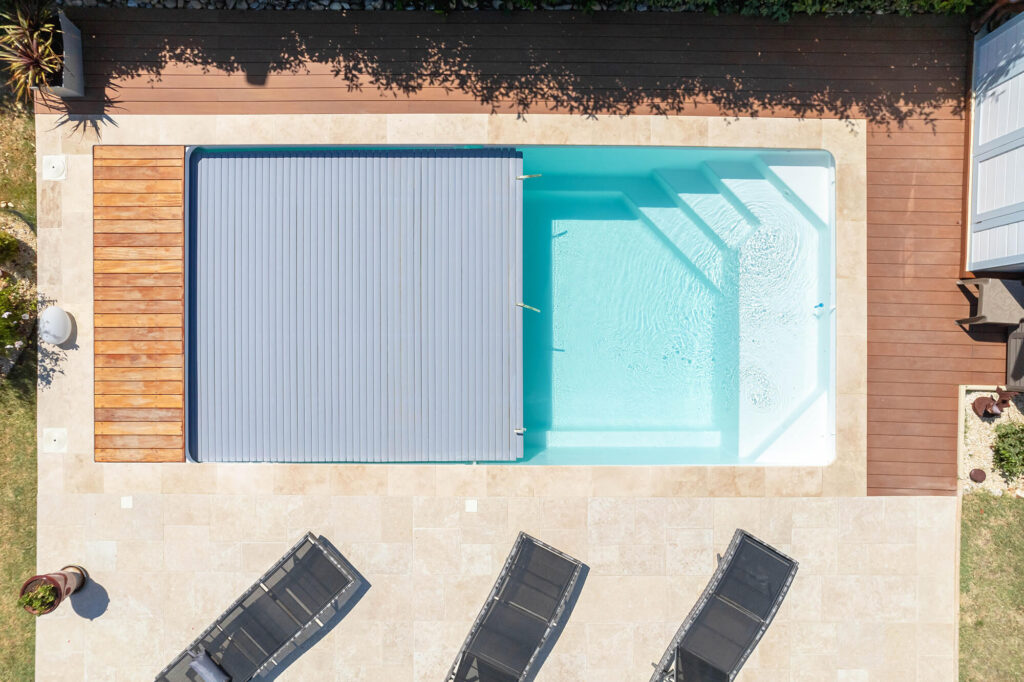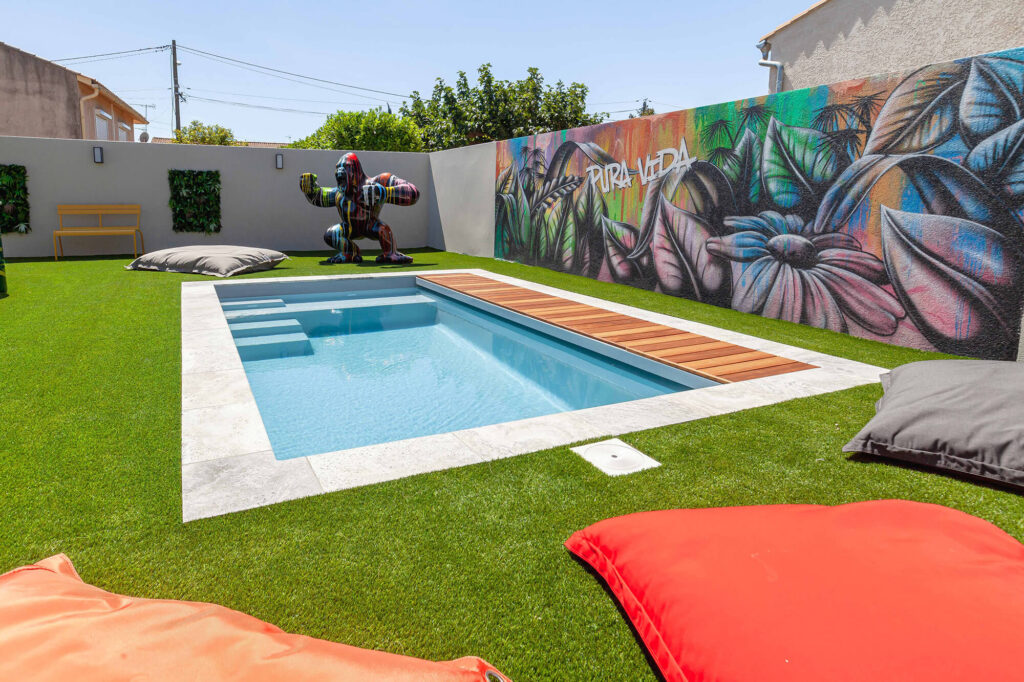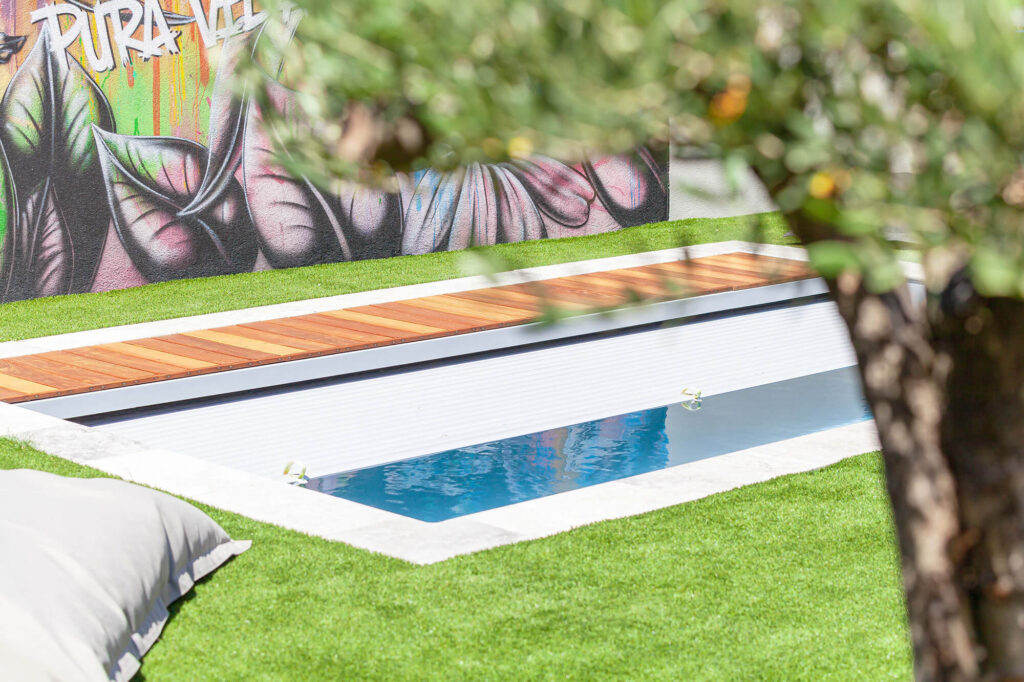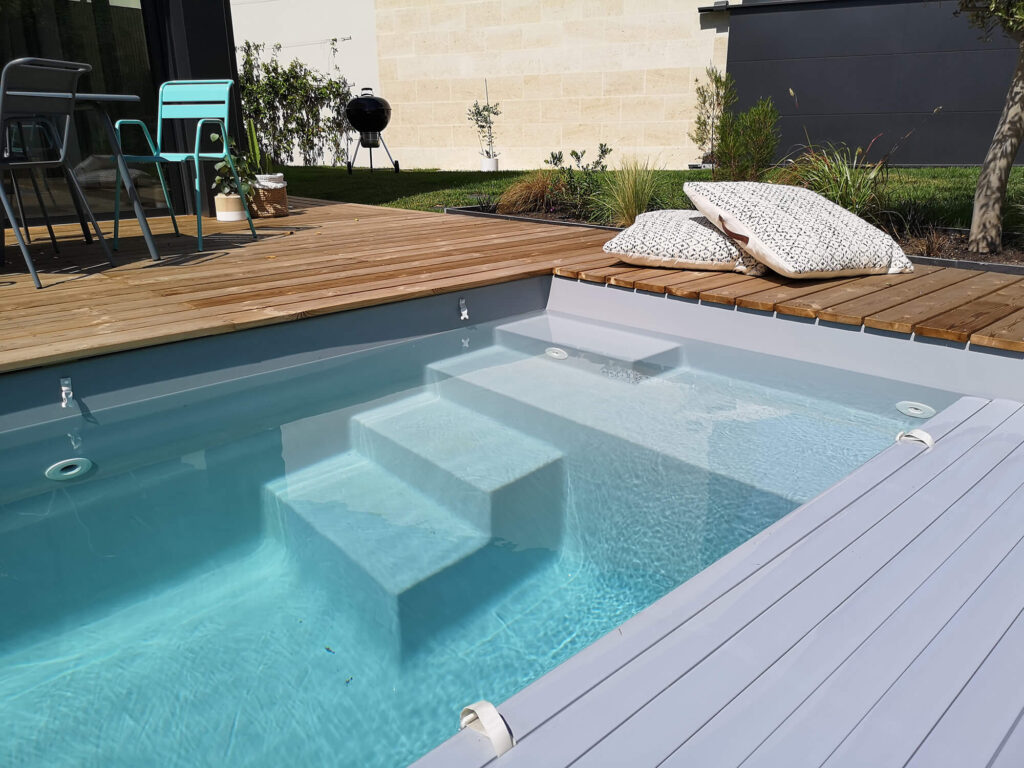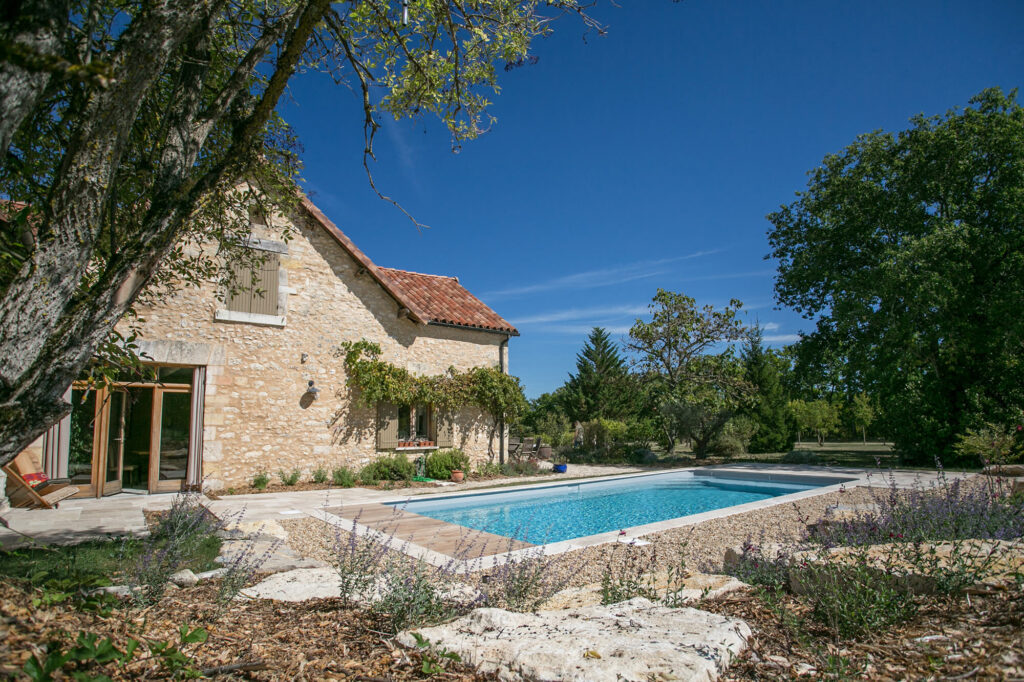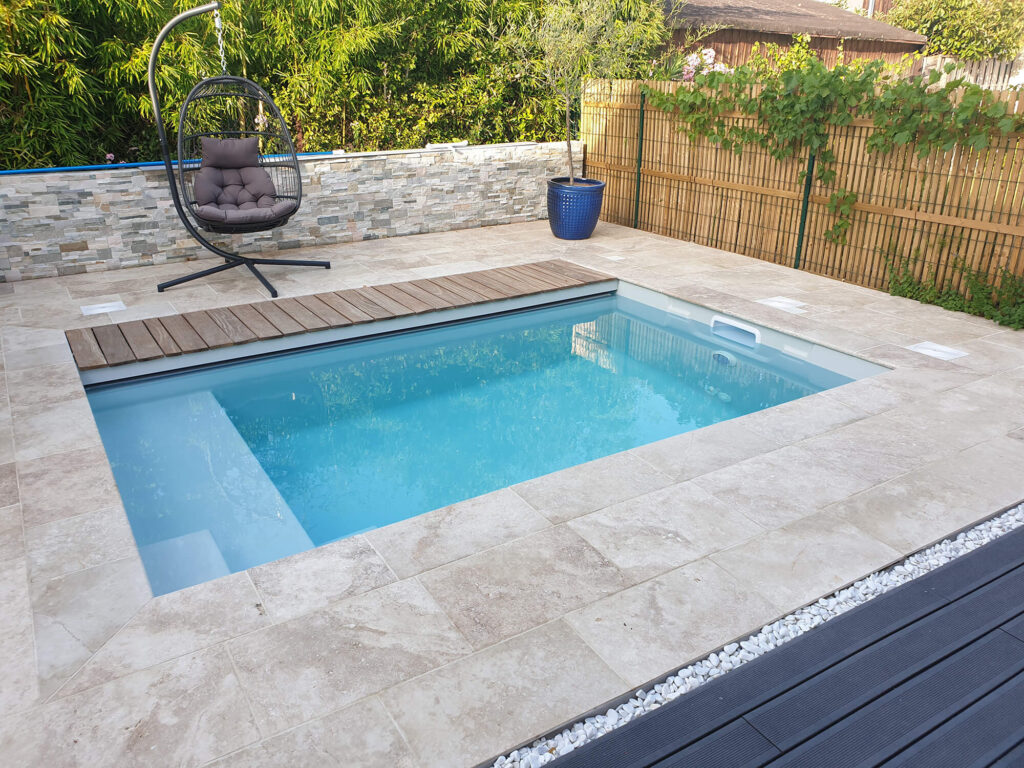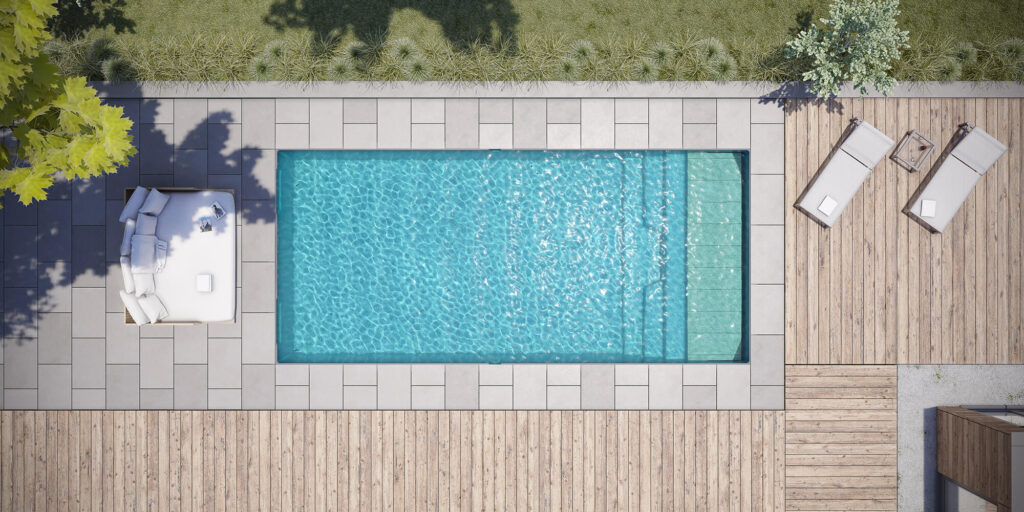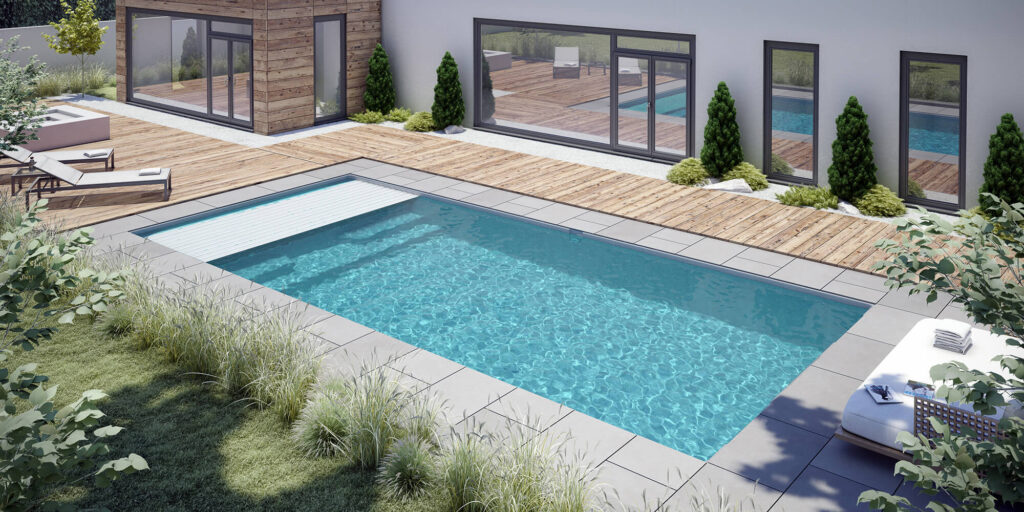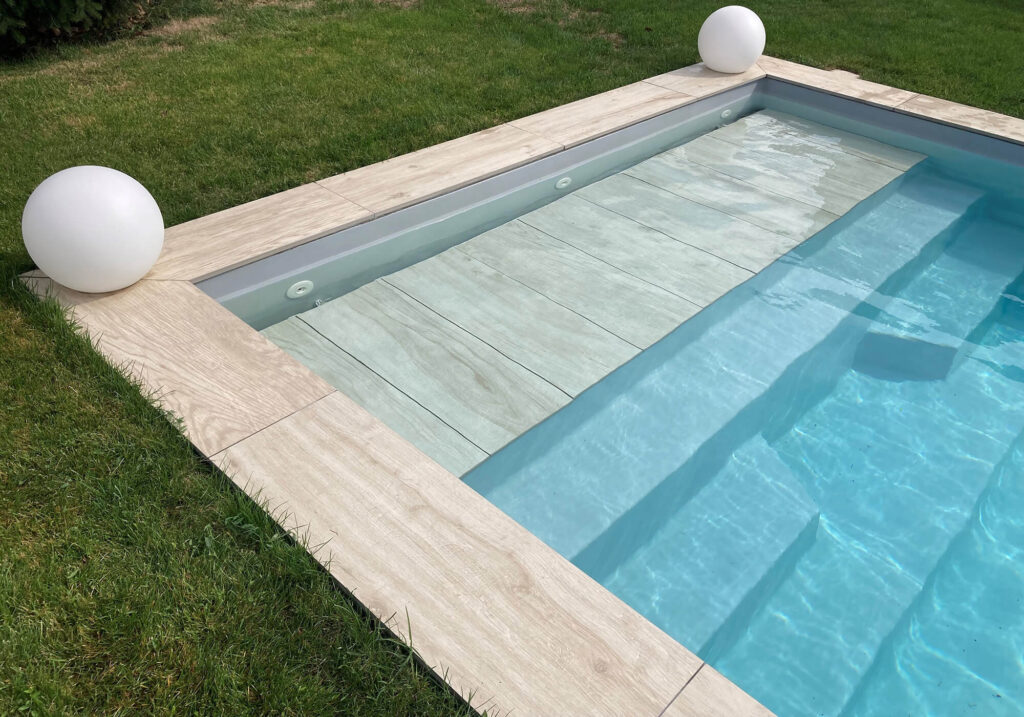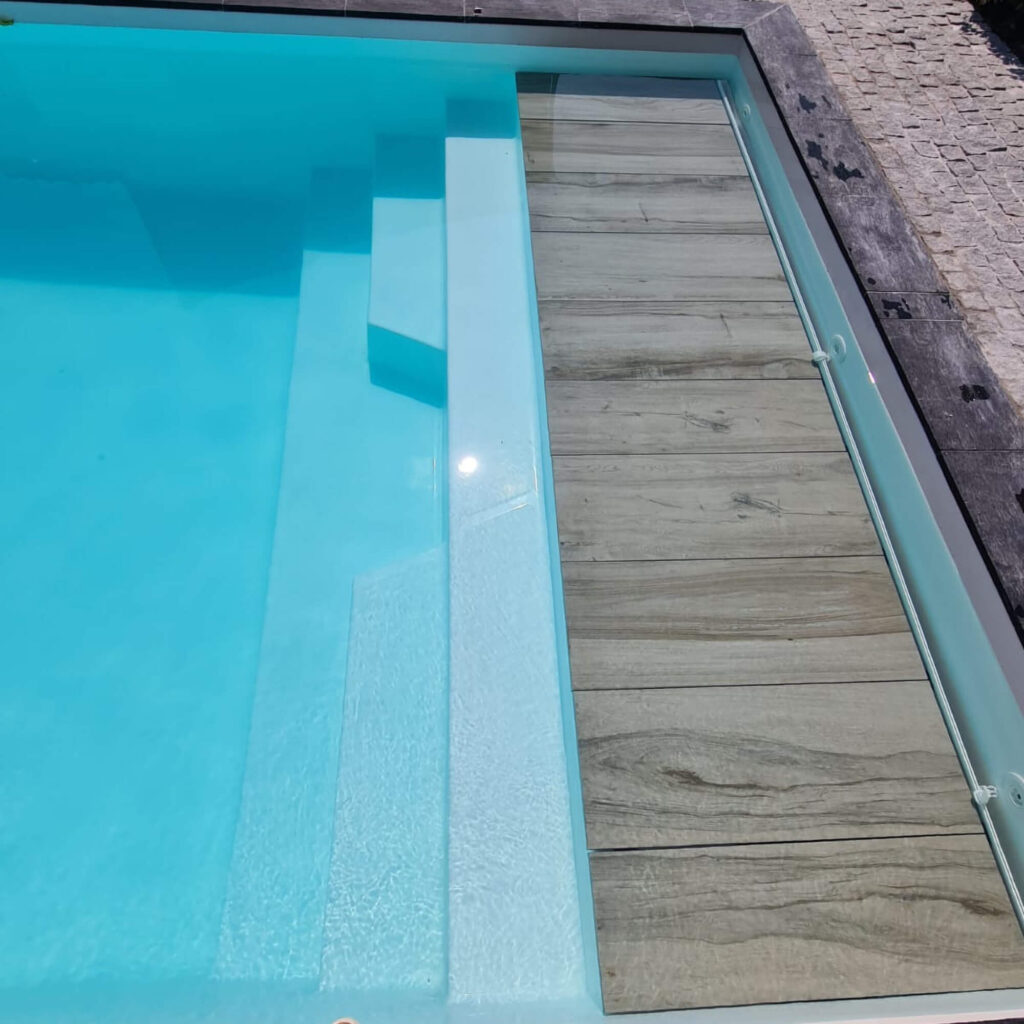You’ve just come back from a few days’ vacation and… It’s the drama! Your pool water has turned greenyour walls slippery… There’s no doubt about it: without
maintenance
your pool has certainly turned. In fact, just a few days are enough to cause the appearance of green algae in your pond, responsible for this green color – uninviting. If this happens to you, don’t panic! In most cases, you’ll be back to crystal-clear, healthy water in no time… as long as you identify the cause of the problem! Yes, green algae in your pool can be caused by several factors.
So before you jump headlong into a somewhat approximate treatment, discover our guide to understand, prevent and correctly treat green water your pool.
Causes of green pool water
The appearance of green algae inside your pond can be the result of several factorssuch as :
- a rapid rise in water temperature: water temperature has a direct impact on the development of green algae. That’s why, at hot summer weatherit is not uncommon to see a change in the color change of your pond water.
- poor water balance : pH and TAC (alkalinity level) are two parameters that you need to constantly balance. When this is not the case, it leads to imbalance other parameters – such as disinfectant levels, and thus, the proliferation of green algae in your pool.
- Filtration time too short: with regard to your pool’s filtration time, remember that it must correspond to : your water temperature / 2. If it is lower, it is normal to see the appearance of green algae in your pond.
Other factors may be responsible for green water. That’s right, water pollution (dead leaves, pollen, etc.) or even a high number of bathers can contribute to the proliferation of green algae in your pond.
3 steps to get rid of green algae in your pool
Now that you’ve identified the problem, discover the 3 steps to restore clean, healthy water :
- Carry out a water analysis: this involves checking
pH level
and alkalinity levels of your pond. These two parameters play an essential role in the health of your pool. To be optimal, the pH must be between 7 and 7.4. Alkalinity levels should be between 120 and 180 PPM. Before moving on to the next step, it’s imperative that your rates are correct. Otherwise, the chlorine you deposit in your pond will be inactive. Your pool will therefore tend to spin faster. - Shock treatment: to do this, you need to select the appropriate shock treatment your pool’s disinfectant: chlorine, bromine or active oxygen. Refer to your product leaflet for the correct dosage.
- Clean your pool: once the shock treatment has been applied, leave your filtration system running for 48 hours. After this time, you should notice an improvement in the color of your pond. It’s time for you to realize complete cleaning of your pool: bottom, walls, skimmer baskets, etc. To clarify water, you can use flocculent and run your filtration for 48 hours. If you have a cartridge filtration system, be careful! Flocculation can damage it. Don’t hesitate to ask the Aboral specialists for advice on making the right choice.
In summer, it is essential to devote more time to pool maintenance. Thanks to our tips, you should be able to limit the appearance of algae. If, despite everything, your pool continues to turn green, think about consulting our team of experts. They’ll be happy to advise you!
Configure your pool online Back to news